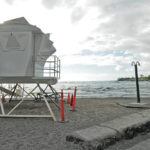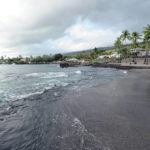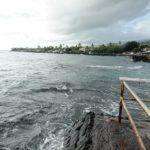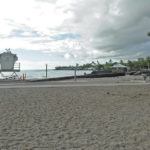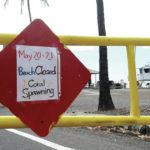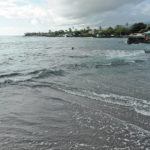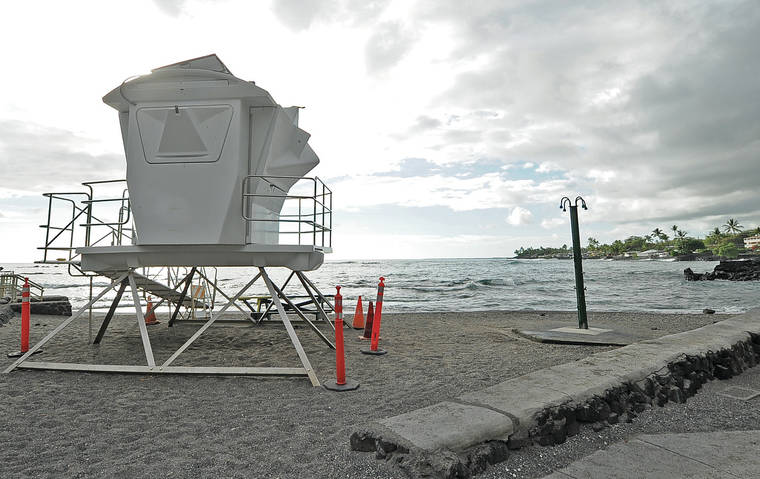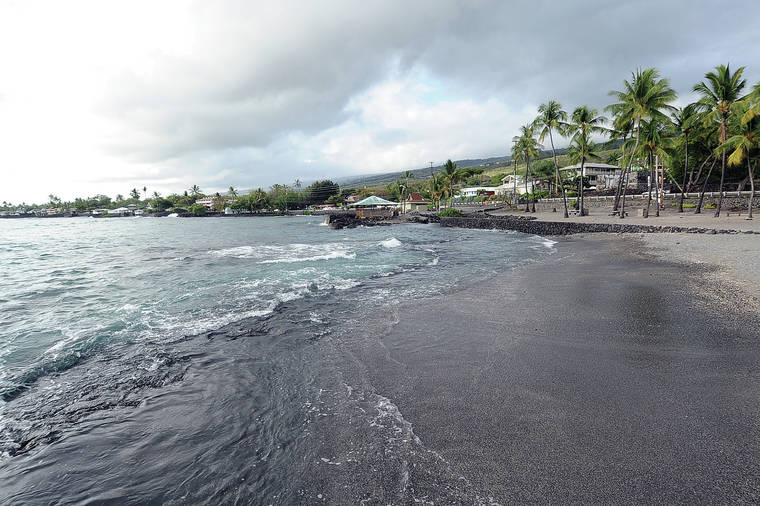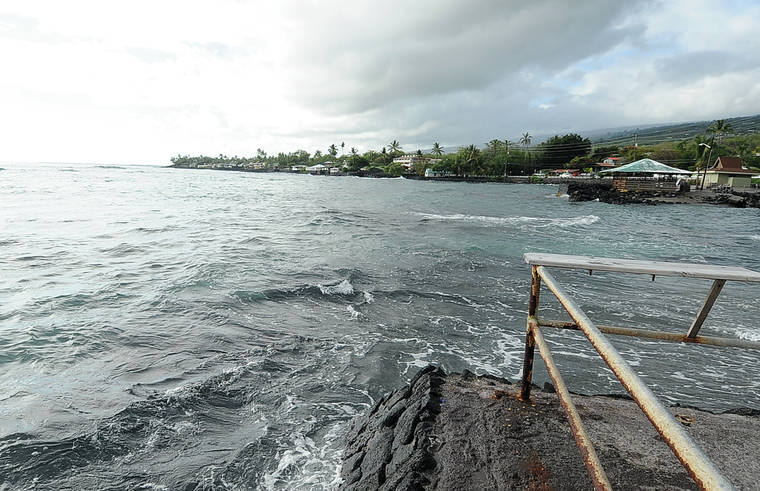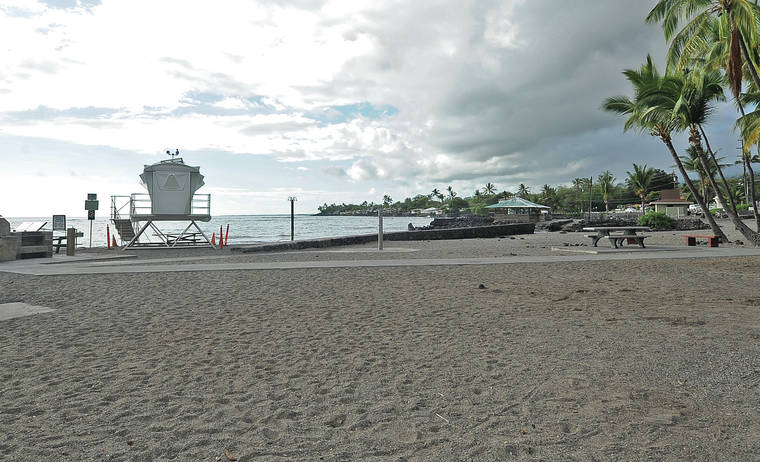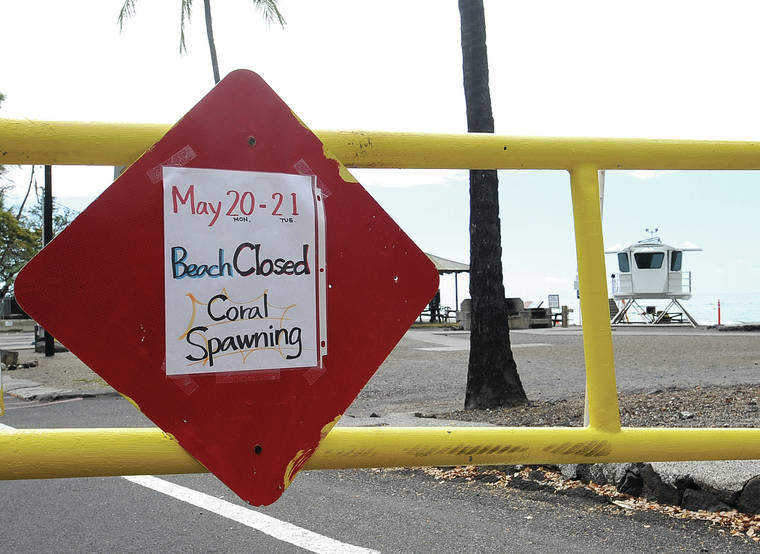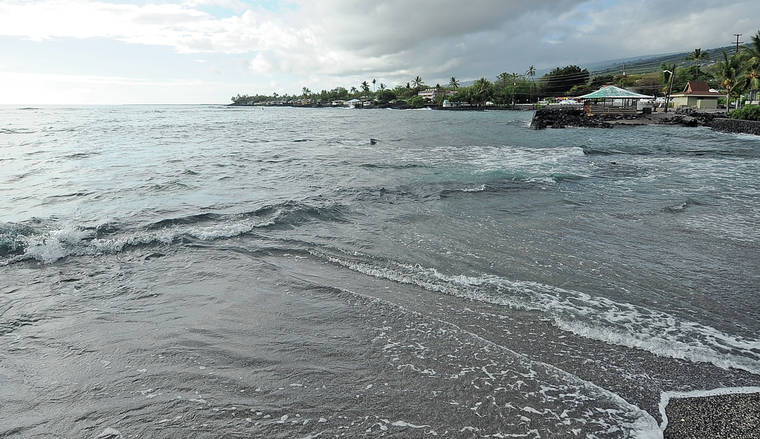KAILUA-KONA — Coral submerged in the typically crowded Kahaluu Bay is amid a reprieve from human traffic, which began Monday morning and continues through today.
The purpose of the county-imposed closure is to allow for a coral spawning event scientists predicted was most likely to occur on those two days. West Hawaii reefs lost roughly 95% of their cauliflower coral in the mass bleaching event of 2015.
“It’s so critical for these to be able to successfully reproduce in order, basically, for the population to survive,” said Kathleen Clark, of the Kahaluu Bay Education Center’s ReefTeach program.
Clark and her colleague, Gene Shaner, set up a tent at the entrance to the bay to inform oceangoers of the temporary closure. Almost everyone was understanding, Clark said, and many were “stoked” to hear about a new type of reef protection.
Kahaluu Bay is the only park the county has ever closed to facilitate a spawning event, although this year wasn’t the first time. The park was off limits for two half days in 2018, but officials decided to up the ante to two full days this time around, with Clark describing the endeavor as sort of a “pilot program” to gauge the possibility of similar closures at other sites in the future.
Places like Kahaluu Bay can get “loved to death,” she said, and strategic breaks from mass usage can go a long way toward preserving them.
Human presence can be disruptive during a spawning event, during which corals release gametes, both sperm and egg, into the water column where fertilization occurs. They form planulae, which Clark described as coral in an embryonic state.
Planulae swim about until environmental cues dictate they settle, a process that typically takes between 24-48 hours. In Kahaluu Bay, Clark said, they often settle on lava rock covered in calcareous algae or a bio film — the same places swimmers and snorkelers believe it’s OK to stand because there’s no live coral.
However, those are the areas new coral are likely to grow. Thus, it’s critical to limit human interference with both the planulae settling during the hiatus, as well as their growth once the park reopens.
Scientists are able to project with relative accuracy when spawning will occur based on years of observation. Events typically occur in the spring — April, May or June. They tend to begin a few days following a full moon and the spawning, on the days it takes place, happens soon after the sunrise.
Environmental cues also dictate spawning events. When they happen, they occur quickly and in synchronous fashion, meaning all corals spawn simultaneously. Clark witnessed such an event Monday morning at 7:04 a.m. that lasted approximately 2 minutes.
“I would call it a very light spawning. It was almost like, ‘Is it happening or is it not?’ You almost felt like your lenses were fogging up or something,” said Clark, adding that when healthy corals spawn they appear to be smoking, almost as though they were on fire.
“But because they were so damaged and their health declined so much from that coral bleaching event, last year and this year are really the first years where they’re healthy enough to spawn,” she continued. “But it’s not like what we used to see.”
It will probably be a couple years before the success of the Kahaluu Bay closures of 2018 and 2019 can be accurately assessed, Clark explained, but there have been positive omens in recent months.
“We are seeing some new, small juvenile coral out there, which is a really great sign,” she said.
